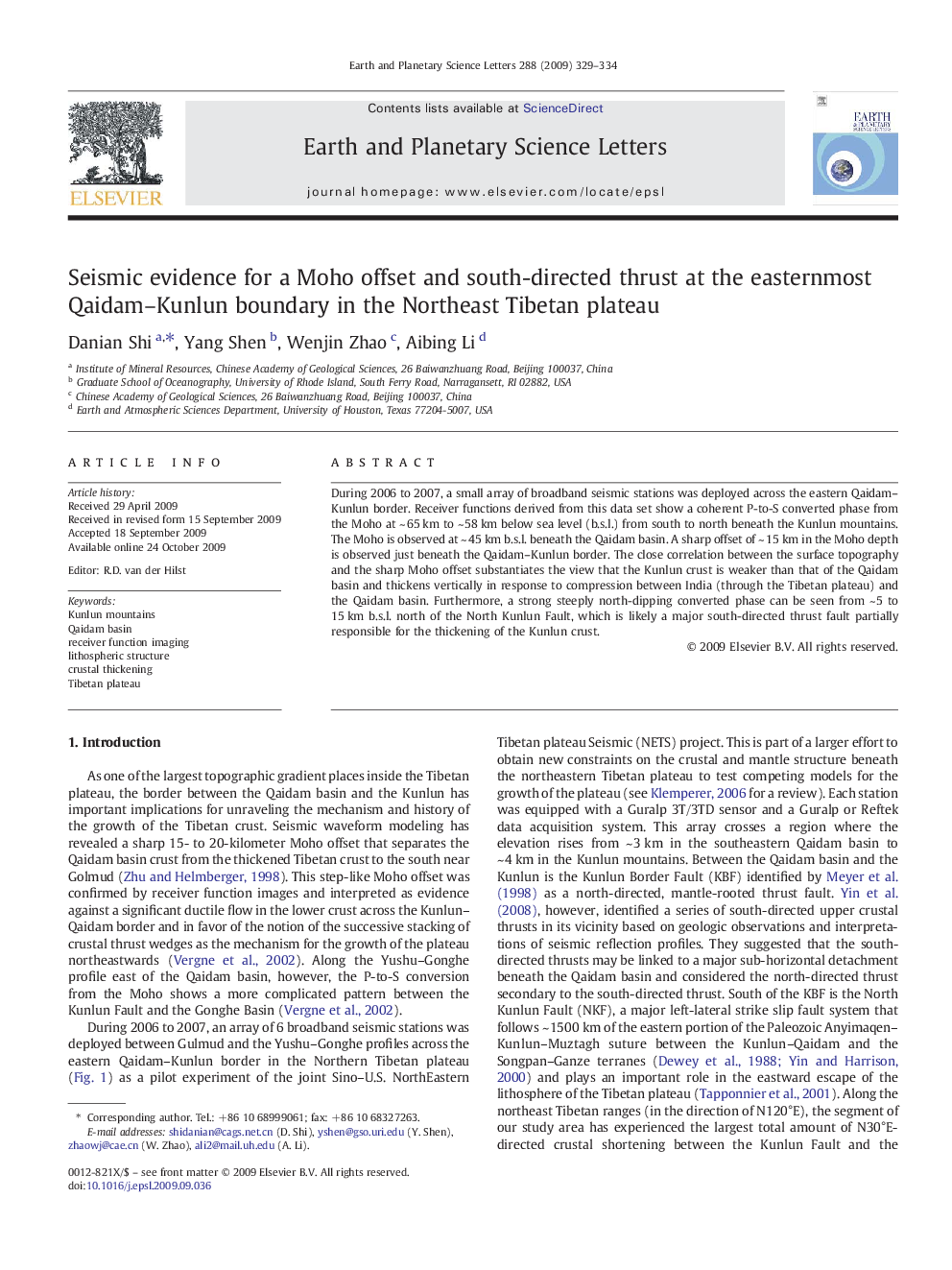| Article ID | Journal | Published Year | Pages | File Type |
|---|---|---|---|---|
| 4678975 | Earth and Planetary Science Letters | 2009 | 6 Pages |
During 2006 to 2007, a small array of broadband seismic stations was deployed across the eastern Qaidam–Kunlun border. Receiver functions derived from this data set show a coherent P-to-S converted phase from the Moho at ~ 65 km to ~ 58 km below sea level (b.s.l.) from south to north beneath the Kunlun mountains. The Moho is observed at ~ 45 km b.s.l. beneath the Qaidam basin. A sharp offset of ~ 15 km in the Moho depth is observed just beneath the Qaidam–Kunlun border. The close correlation between the surface topography and the sharp Moho offset substantiates the view that the Kunlun crust is weaker than that of the Qaidam basin and thickens vertically in response to compression between India (through the Tibetan plateau) and the Qaidam basin. Furthermore, a strong steeply north-dipping converted phase can be seen from ~ 5 to 15 km b.s.l. north of the North Kunlun Fault, which is likely a major south-directed thrust fault partially responsible for the thickening of the Kunlun crust.
